How to Make Your Social Media Accounts Hacker Proof?
In today's digital age, social media isn't just a platform for sharing cute cat videos or vacation snapshots; it's a vital part of our lives. However, with great connectivity comes great responsibility, especially when it comes to protecting your personal information. Have you ever stopped to think about how vulnerable your accounts might be? Hackers are always lurking, waiting for an opportunity to exploit weaknesses. But fear not! This article explores effective strategies to enhance the security of your social media accounts, protecting your personal information from hackers and ensuring a safer online experience. By following these tips, you can fortify your defenses and enjoy your time online with peace of mind.
Recognizing the potential threats to social media accounts is crucial for effective security. The internet can be a wild west, where anything goes, and understanding the landscape is your first step to safety. From identity theft to data breaches, the risks are numerous. Did you know that over 80% of social media accounts are vulnerable to attacks due to weak security practices? It's essential to be aware of common vulnerabilities, such as:
- Weak passwords
- Unsecured connections
- Phishing scams
By familiarizing yourself with these threats, you can better protect your online presence and enjoy a more secure social media experience.
A robust password is your first line of defense against unauthorized access. Think of your password as the lock on your front door; if it's flimsy, anyone can waltz right in. Here are some tips for creating strong, unique passwords that are difficult for hackers to guess or crack:
- Use a mix of upper and lower case letters, numbers, and symbols.
- Aim for at least 12 characters.
- Avoid common words or easily guessable information, like birthdays.
Remember, the longer and more complex your password, the better protected you are. But how do you keep track of all these complicated passwords? That’s where password managers come in.
Password managers can simplify the process of managing multiple strong passwords. Imagine having a secure vault where you can store all your passwords, and the best part? You only need to remember one master password! These tools work by encrypting your passwords and allowing you to generate strong, random passwords for each of your accounts. The advantages of using a password manager include:
- Secure storage of all your passwords
- Automatic password generation
- Easy access across multiple devices
Selecting a reliable password manager is essential. With so many options available, how do you choose the right one? Look for key features such as:
- Strong encryption standards
- User-friendly interface
- Multi-device compatibility
Popular password managers like LastPass, 1Password, and Bitwarden offer various features to help you keep your accounts secure. Do your research and find the one that fits your needs!
Two-factor authentication (2FA) adds an extra layer of security to your accounts. It's like having a second lock on your door. Even if someone manages to get your password, they still need that second piece of information to gain access. Enabling 2FA is often as simple as going into your account settings and following a few prompts. The benefits of using 2FA are immense, as it significantly reduces the risk of unauthorized access.
Keeping your security settings up to date is vital for account protection. Just like you wouldn’t leave your windows open in a storm, you shouldn’t leave your social media accounts vulnerable. Regularly reviewing and adjusting your privacy and security options can help you stay one step ahead of potential threats. Make it a habit to check your settings every few months. You might be surprised at how many new features or updates have been introduced!
Phishing attacks are a common method used by hackers to gain access to accounts. These deceptive tactics can be incredibly convincing, often mimicking legitimate companies or friends. To stay safe, it’s essential to know how to identify and avoid falling victim to these scams. Look out for suspicious emails or messages that ask for personal information or direct you to unfamiliar websites.
Understanding the various phishing techniques can help users stay vigilant. Common methods include:
- Email spoofing
- Fake websites
- Urgent messages that create panic
By recognizing these signs, you can protect yourself from falling prey to these malicious schemes.
Knowing how to report phishing attempts is essential for community safety. If you encounter suspicious messages or links, take action! Most social media platforms have straightforward procedures for reporting phishing. By doing so, you not only protect yourself but also help others avoid the same pitfalls.
Staying informed about the latest security trends and threats is crucial for protecting your social media accounts. The digital landscape is always evolving, and so are the tactics used by hackers. Regularly check reputable cybersecurity blogs, follow experts on social media, and consider subscribing to newsletters that focus on online safety. Knowledge is power, and it can significantly reduce your risk of becoming a victim.
Q: What should I do if I think my account has been hacked?
A: Immediately change your password, enable two-factor authentication, and report the incident to the platform.
Q: How often should I update my passwords?
A: It's best to update your passwords every three to six months, or immediately if you suspect a breach.
Q: Can I use the same password for multiple accounts?
A: No, using the same password increases your risk. Always use unique passwords for each account.
Q: What are some signs of a phishing attempt?
A: Look for poor grammar, unfamiliar sender addresses, and requests for personal information.
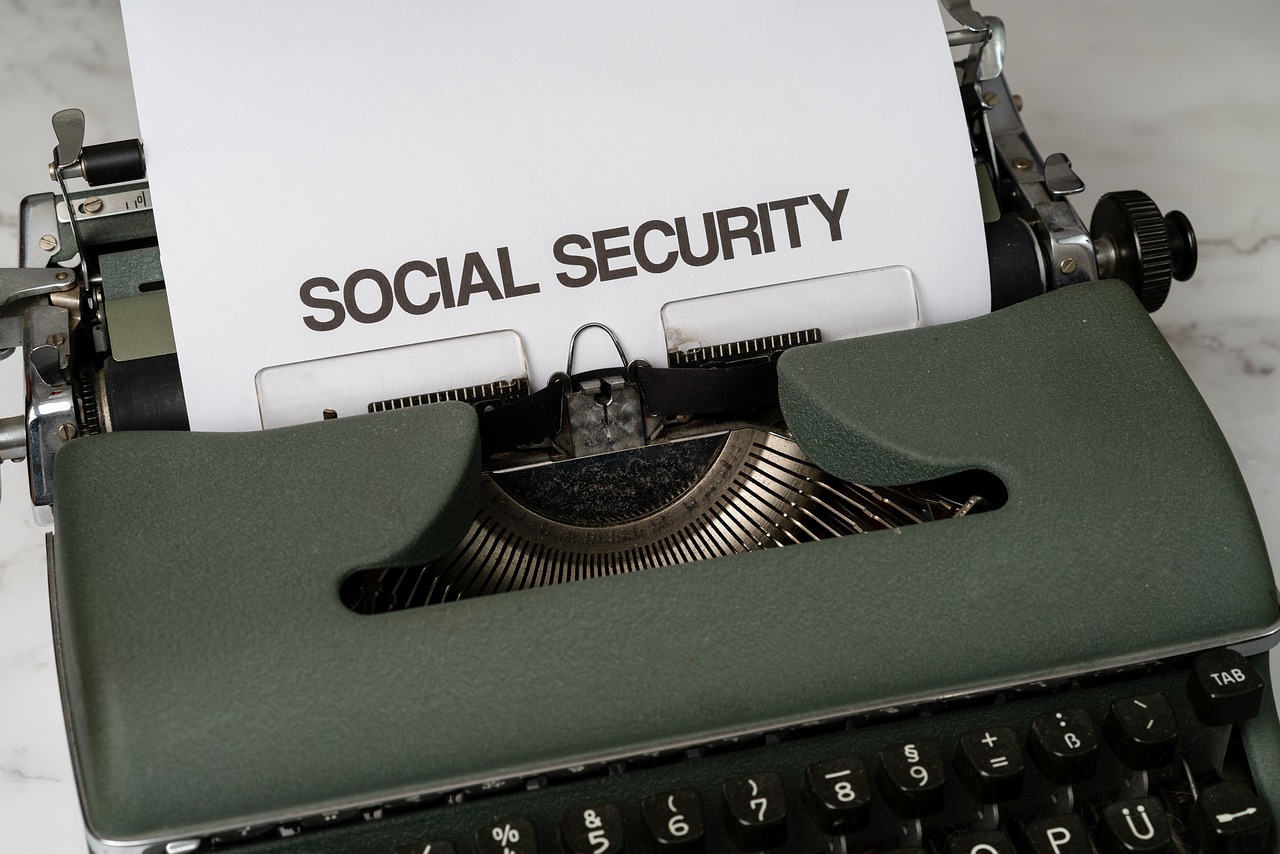
Understanding Social Media Risks
In today's digital landscape, social media platforms have become a double-edged sword. They provide us with incredible opportunities to connect, share, and express ourselves, but they also expose us to a myriad of risks that can jeopardize our personal information and privacy. Understanding these risks is crucial for anyone who wants to navigate the online world safely. So, what exactly are these risks?
One of the most significant threats is the potential for identity theft. Hackers can gain access to your personal details and impersonate you, leading to financial loss and damage to your reputation. Imagine waking up one day to find that someone has been using your name to commit fraud—it's a nightmare scenario that can happen to anyone.
Another common risk is the exposure of your private information. Many users unknowingly share sensitive details in their profiles or posts, which can be harvested by cybercriminals. Think about it: do you really want your home address, phone number, or even your vacation plans visible to everyone? The answer is likely a resounding no!
Moreover, social media platforms are often targeted by phishing attacks. These deceptive tactics involve tricking users into providing their login credentials through fake messages or websites that look legitimate. For instance, you might receive a message claiming to be from your favorite social media platform, urging you to click a link to verify your account. If you fall for it, you could be handing over your account to a hacker without even realizing it!
In addition to these risks, there’s also the threat of malware. Cybercriminals often use social media to distribute malicious software that can infect your devices, steal your data, and compromise your accounts. Just one click on an infected link can open the floodgates to a world of trouble.
To summarize, here are some key risks associated with social media:
- Identity Theft: Unauthorized access to personal information.
- Information Exposure: Sharing sensitive details publicly.
- Phishing Attacks: Deceptive tactics to steal login credentials.
- Malware Distribution: Infecting devices through malicious links.
By being aware of these risks, you can take proactive steps to safeguard your online presence. Remember that knowledge is power—understanding the threats you face is the first step in defending yourself against them. So, stay alert and always think twice before sharing personal information or clicking on suspicious links!
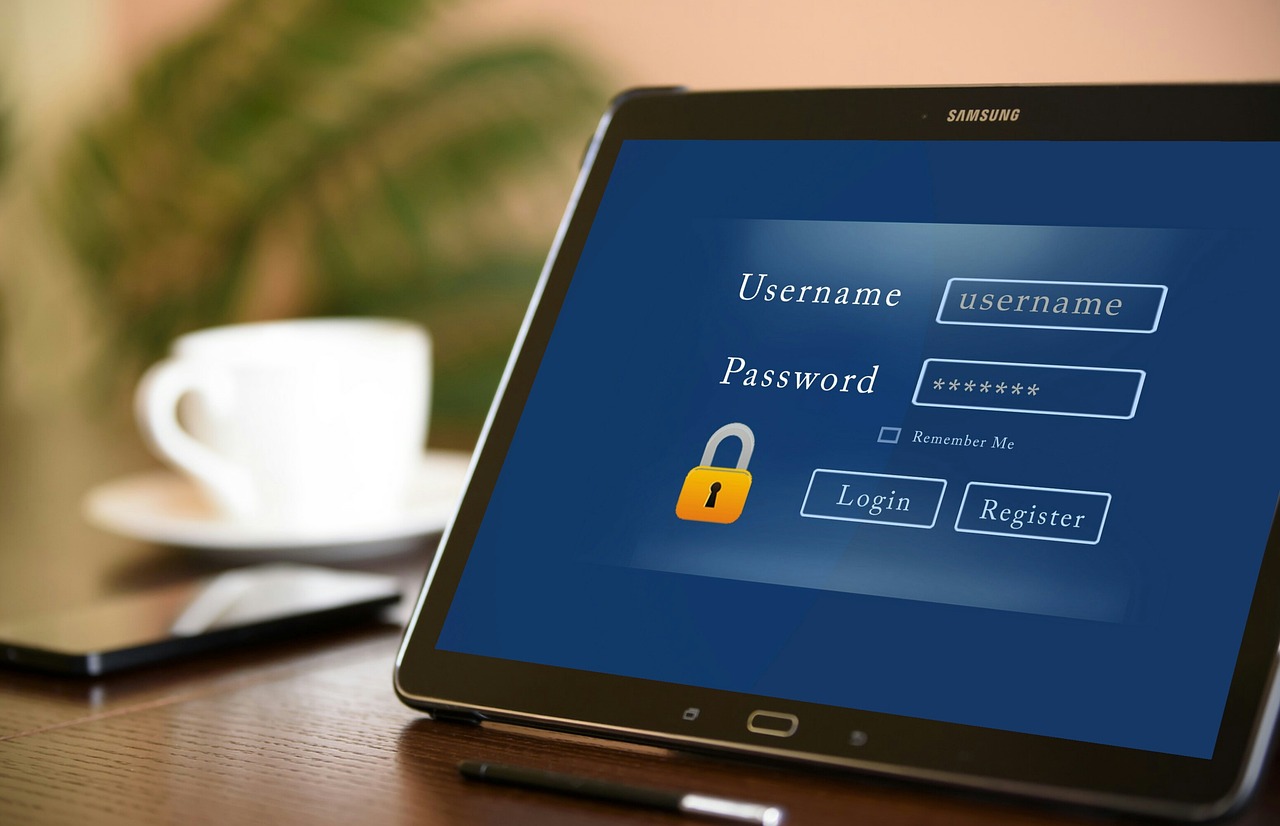
Creating Strong Passwords
is like building a fortress around your social media accounts—it's your first line of defense against hackers who are constantly lurking in the shadows, waiting for a chance to breach your security. A weak password is akin to leaving your front door wide open; it invites trouble. So, how do you craft a password that’s tough enough to withstand the most determined cyber intruders? Let’s dive into some effective strategies!
First off, a good password should be a blend of length, complexity, and unpredictability. Aim for at least 12 to 16 characters, and include a mix of uppercase letters, lowercase letters, numbers, and special symbols. For instance, instead of using “password123,” consider something like “G0ldfish!Sw1mm1ng@N1ght.” This not only makes it harder for hackers to guess but also turns your password into a quirky phrase that’s easier for you to remember.
Another important aspect is to avoid using easily obtainable information. Your name, birthday, or the name of your pet might seem like good choices, but they are often the first things a hacker will try. Instead, think outside the box. Consider using a passphrase—a sequence of random words or a sentence that you can easily recall. For example, “BlueSky!Dance@Rocket” is both memorable and secure.
Furthermore, it's crucial to create unique passwords for each of your accounts. If one account gets compromised, you don’t want the hacker to have access to all your other accounts. To help manage this, you might want to consider using a password manager. These tools can generate and store complex passwords for you, making it easier to maintain unique credentials across various platforms.
Here’s a quick summary of what makes a strong password:
- At least 12-16 characters long
- A mix of uppercase and lowercase letters
- Inclusion of numbers and special symbols
- Avoiding personal information
- Using unique passwords for different accounts
In conclusion, creating strong passwords is not just a suggestion; it’s a necessity in today’s digital age. By taking the time to craft robust passwords, you are significantly enhancing your online security. Remember, your password is your shield, so make it as formidable as possible!

Using Password Managers
In today’s digital landscape, where we juggle multiple accounts and passwords, using a password manager can be a game changer. Imagine having a personal vault that securely stores all your passwords, allowing you to access them with just a single master password. Sounds convenient, right? Password managers not only help you generate strong, unique passwords for each of your accounts, but they also save you from the headache of remembering them all.
So, how do these nifty tools work? Essentially, a password manager encrypts your passwords and stores them in a secure location, accessible only to you. When you need to log into an account, the password manager fills in the login details for you. This means you can create complex passwords that are nearly impossible for hackers to crack, without the hassle of memorizing each one. It's like having a personal assistant dedicated to your online security!
But wait, there’s more! Password managers come with a variety of features that enhance your security further. For instance, many of them offer:
- Password generation: Automatically create strong passwords that mix letters, numbers, and symbols.
- Secure sharing: Share passwords securely with trusted friends or family without revealing the actual password.
- Security audits: Regularly check the strength of your passwords and alert you if any are weak or compromised.
Choosing the right password manager can feel overwhelming, given the plethora of options available. However, it’s crucial to select one that suits your needs and offers robust security features. Look for a password manager that uses strong encryption methods, has a good reputation, and is easy to use. Some popular choices include LastPass, 1Password, and Bitwarden, each with its own unique set of features and pricing plans.
In conclusion, using a password manager is not just a luxury but a necessity in today’s online world. It allows you to enhance your security effortlessly while simplifying your online experience. By taking this step, you’re not only protecting your accounts but also giving yourself peace of mind, knowing that your personal information is secure.
What is a password manager?
A password manager is a software application designed to store and manage your passwords securely. It helps users generate strong passwords and autofill login details for various accounts.
Are password managers safe to use?
Yes, reputable password managers use strong encryption methods to protect your data. However, it's essential to choose a trustworthy password manager and use a strong master password.
Can I use a password manager on multiple devices?
Most password managers offer cross-platform compatibility, allowing you to access your passwords on different devices, including smartphones, tablets, and computers.
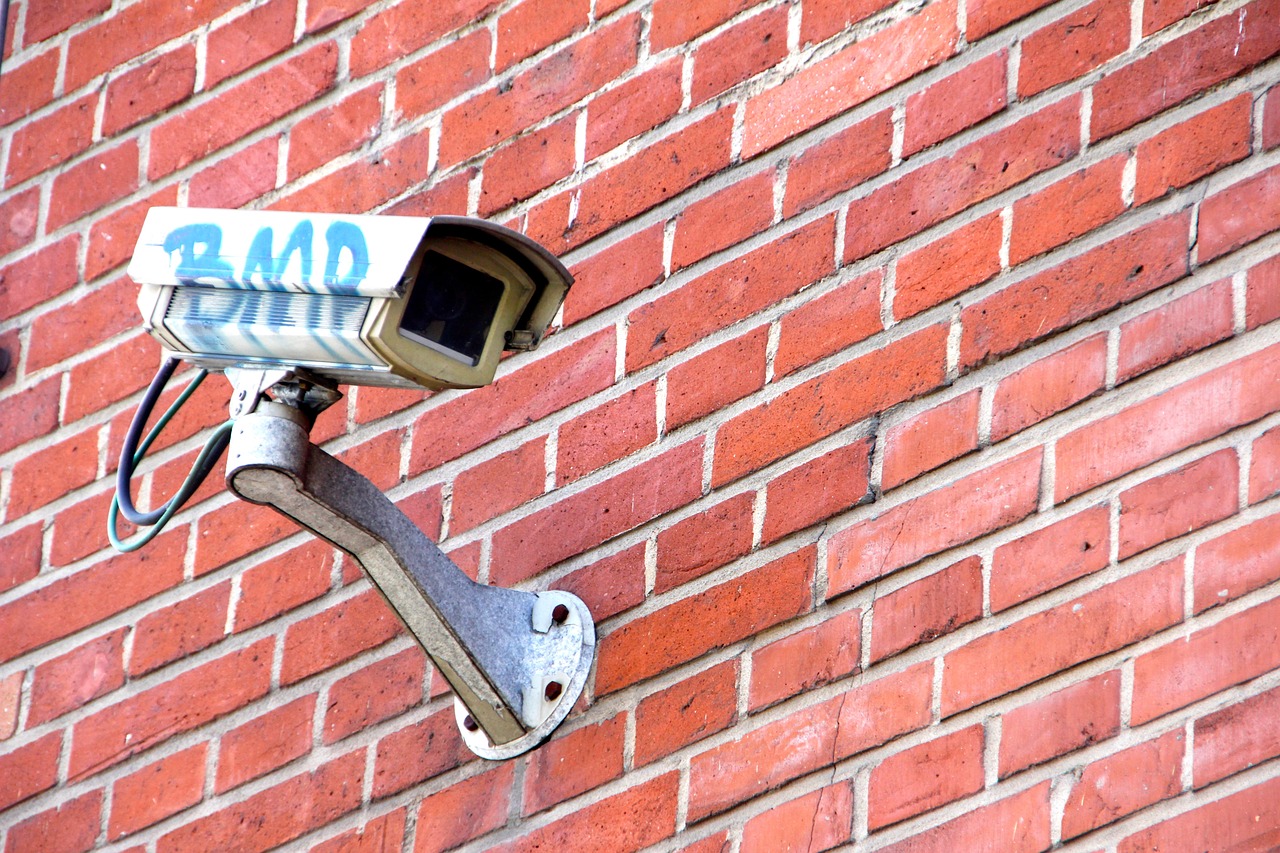
Choosing the Right Password Manager
When it comes to securing your online accounts, can feel like picking the best fruit at the market. With so many options available, it’s essential to understand what features will best serve your needs. A good password manager not only stores your passwords securely but also helps you generate strong, unique passwords for each of your accounts. Think of it as your personal vault, keeping your secrets safe from prying eyes.
First and foremost, consider the security features that a password manager offers. Look for end-to-end encryption, which ensures that only you can access your stored passwords. Additionally, check if the manager has a zero-knowledge policy, meaning the service provider cannot access your data. This is akin to having a safe that only you possess the key to, providing an extra layer of reassurance.
Another crucial aspect is cross-platform compatibility. You want a password manager that works seamlessly across all your devices—be it your smartphone, tablet, or computer. Imagine trying to access your passwords on your phone only to realize your manager doesn't support mobile devices; it’s not just inconvenient, it can also be risky. Make sure the manager you choose syncs effortlessly across platforms, keeping your information at your fingertips whenever you need it.
Usability is also a significant factor. A user-friendly interface can make a world of difference, especially when you’re in a hurry. You don’t want to spend precious minutes fumbling through complicated menus when you need to log in quickly. Look for a password manager that offers a clean, intuitive design, with features like one-click login and easy password sharing options.
Lastly, consider the price. While there are free options available, they often come with limitations. Paid password managers usually provide enhanced features, better security, and customer support. It’s worth investing a little to protect your online presence. To help you compare some popular password managers, here’s a quick overview:
| Password Manager | Features | Price |
|---|---|---|
| LastPass | Cross-platform, 2FA, secure sharing | Free; Premium at $3/month |
| 1Password | Travel mode, password sharing, dark web monitoring | Starts at $2.99/month |
| Dashlane | VPN, dark web monitoring, password health reports | Free; Premium at $4.99/month |
In conclusion, selecting the right password manager is not just about convenience; it’s a vital step in fortifying your online security. By considering factors such as security features, cross-platform compatibility, usability, and cost, you can make an informed decision that best fits your needs. Remember, in the digital age, your passwords are the keys to your online life—choose wisely!

Setting Up Two-Factor Authentication
Setting up Two-Factor Authentication (2FA) is one of the best ways to enhance the security of your social media accounts. Think of it as adding a second lock to your front door; even if someone manages to get hold of your key (or password), they still can’t get in without that second lock. The process is relatively simple and can vary slightly depending on the platform you’re using, but the core idea remains the same: you’ll need to provide two forms of identification before accessing your account.
To get started, first log into your social media account and navigate to the security settings. Most platforms like Facebook, Twitter, and Instagram have a dedicated section for security and login settings. Once there, look for the option that mentions Two-Factor Authentication or 2FA. You may find options to receive a code via SMS, email, or through an authentication app.
Here’s a quick breakdown of the common methods you can choose from:
- SMS Codes: You’ll receive a text message with a verification code each time you log in from an unrecognized device.
- Email Codes: Similar to SMS, but the code is sent to your registered email address.
- Authentication Apps: Apps like Google Authenticator or Authy generate time-sensitive codes that add an extra layer of security.
After selecting your preferred method, follow the on-screen instructions to set it up. You’ll typically need to enter your phone number or email address and verify it by entering a code sent to that contact. Once completed, you’ll be prompted to enable 2FA, and voila! Your account is now much safer from unauthorized access.
Remember, while 2FA significantly boosts your account security, it’s not foolproof. Always be cautious of phishing attempts or suspicious links, as these can still compromise your security. It’s also a good practice to keep your authentication app or phone secure, as losing access to it can lock you out of your account. So, treat your security settings like a well-guarded treasure; the more effort you put into protecting it, the safer it will be!

Regularly Updating Security Settings
In the ever-evolving landscape of online threats, keeping your social media accounts secure is akin to maintaining a fortress; it requires constant vigilance and regular updates. Just as you wouldn't leave your front door unlocked, you shouldn't neglect the security settings of your social media profiles. Regularly updating these settings is crucial for ensuring that your personal information remains protected from prying eyes and malicious actors.
So, what exactly should you be looking for when updating your security settings? First and foremost, take a good look at your privacy settings. Social media platforms often tweak their privacy policies, which can inadvertently expose your information to the public. Make it a habit to review who can see your posts, who can send you friend requests, and what information is visible on your profile. A good rule of thumb is to set your profile to the most private settings that still allow you to connect with friends and family. Remember, not everyone needs to know your business!
Additionally, you should regularly check for any unauthorized devices that may be logged into your account. Most social media platforms provide a feature that lets you see all active sessions. If you spot any unfamiliar devices, it's crucial to log them out immediately and change your password. Think of it as checking your bank statement for unauthorized transactions; you wouldn't let a stranger continue to access your funds, so why let them access your personal information?
Another important aspect to consider is the apps and services linked to your social media accounts. Over time, you may have granted access to various third-party applications that could pose a risk. Periodically review these linked accounts and revoke access to any that you no longer use or trust. This is similar to cleaning out your closet; if you haven't worn it in a year, it's probably time to let it go!
To help you stay organized, consider setting a reminder to review your security settings every few months. You might even want to create a checklist of items to cover during this review. Here’s a simple example:
| Security Setting | Action |
|---|---|
| Privacy Settings | Review who can see your posts |
| Active Sessions | Log out of unfamiliar devices |
| Linked Apps | Remove unauthorized access |
By taking these proactive steps, you not only bolster your account's defenses but also cultivate a habit of security awareness. Remember, the digital world is constantly changing, and so are the tactics used by hackers. Keeping your security settings updated is not just a one-time task; it’s an ongoing commitment to safeguarding your online presence. So, roll up your sleeves, dive into those settings, and take charge of your security!
Q: How often should I update my security settings?
A: It's advisable to review your security settings every few months or whenever you hear about new threats or changes in social media policies.
Q: What should I do if I suspect my account has been hacked?
A: Immediately change your password, log out of all sessions, and review your security settings. Consider enabling two-factor authentication for added protection.
Q: Are password managers safe to use?
A: Yes, reputable password managers use strong encryption to keep your passwords secure, making them a safer alternative to using the same password across multiple sites.
Q: How can I recognize phishing attempts?
A: Look for suspicious emails or messages that ask for personal information or contain unfamiliar links. Always verify the source before clicking on anything.
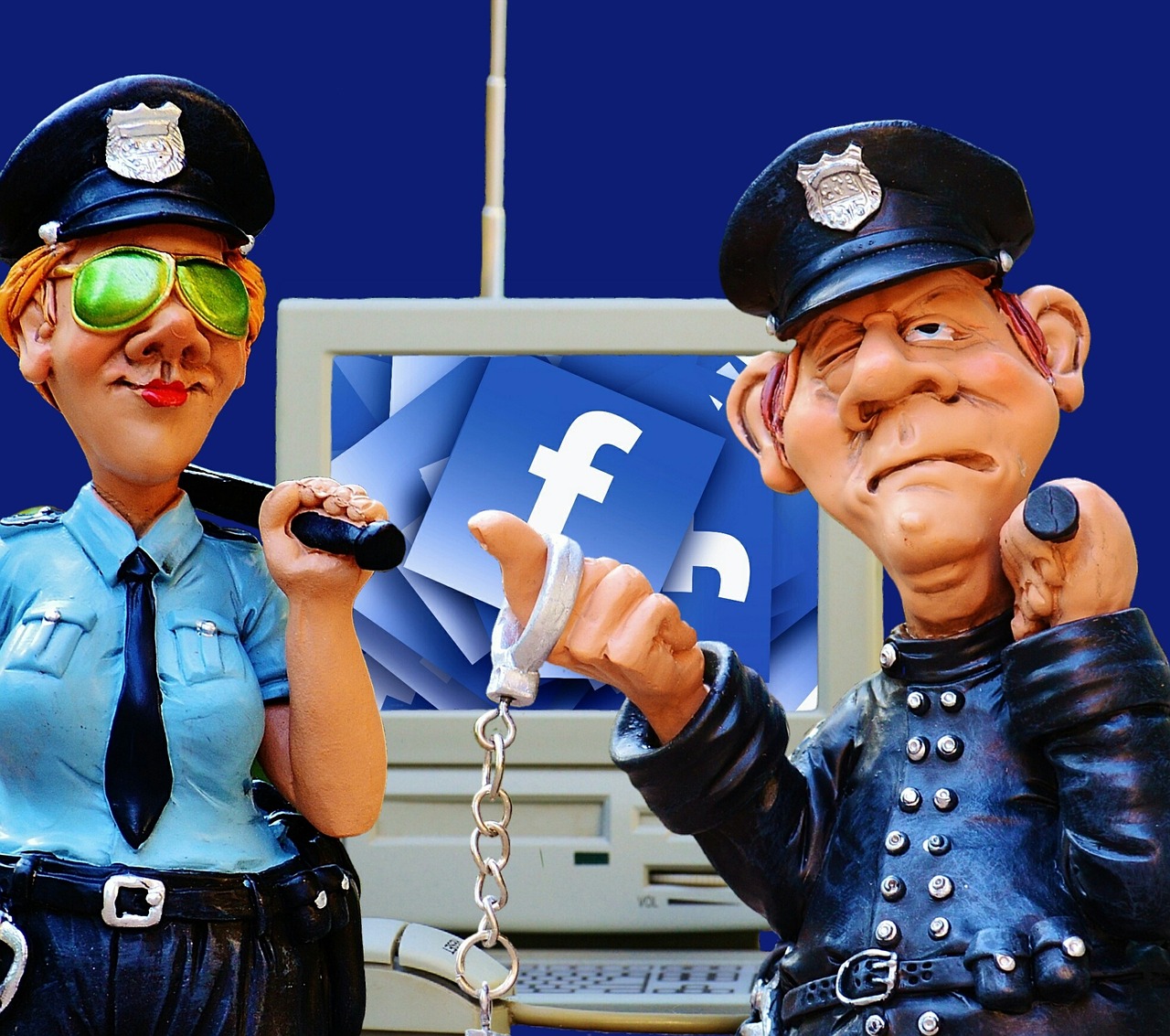
Recognizing Phishing Attempts
In today's digital landscape, phishing attacks have become alarmingly common, posing a significant threat to your social media security. These deceptive tactics are designed to trick you into revealing personal information, such as passwords or credit card numbers. Imagine receiving an email that looks like it’s from your favorite social media platform, urging you to click on a link to verify your account. Sounds harmless, right? But this is how hackers operate—by crafting messages that appear legitimate to lure unsuspecting users.
To effectively guard against these threats, it's essential to develop a keen eye for spotting the signs of phishing attempts. One of the most common indicators is the sender's email address. Often, phishing emails will come from addresses that look similar to official ones but contain subtle differences. For instance, instead of “@facebook.com,” you might see “@faceb0ok.com” with a zero instead of an 'o'. Always double-check the sender's information before clicking any links or providing personal details.
Another red flag is the urgency conveyed in the message. Phishing emails often create a false sense of urgency, claiming that your account will be suspended or compromised unless you take immediate action. This tactic is designed to rush you into making hasty decisions without thinking critically. Remember, legitimate companies will never pressure you to act quickly. Take a moment to breathe and assess the situation before clicking on any links.
Additionally, look out for poor grammar and spelling mistakes within the message. Many phishing attempts come from non-native speakers, leading to awkward phrasing or typos. If an email from a major corporation contains glaring errors, it’s likely a scam. Legitimate organizations take pride in their communication and ensure it is professional and polished.
To further illustrate these points, here’s a quick table summarizing key signs of phishing attempts:
| Indicator | Description |
|---|---|
| Suspicious Sender | Email addresses that are slightly altered or unfamiliar. |
| Urgent Language | Messages that create a sense of panic or urgency. |
| Poor Grammar | Spelling mistakes or awkward phrasing. |
| Unusual Links | Links that do not match the official website URL. |
Finally, always be cautious when receiving unsolicited messages, even if they appear to come from someone you know. Hackers often compromise accounts and use them to send phishing messages to the victim's contacts. If you receive a strange message from a friend, reach out to them through a different channel to verify its authenticity before engaging.
By arming yourself with the knowledge of how to recognize phishing attempts, you can significantly reduce your risk of falling victim to these malicious schemes. Remember, it’s better to be safe than sorry—trust your instincts and always verify before you click!
- What should I do if I suspect a phishing attempt?
If you suspect a phishing attempt, do not click any links. Report the email to your email provider and the company being impersonated. - Can phishing attacks happen on social media?
Yes, phishing attacks can occur on social media platforms through fake messages or malicious links shared by friends. - How can I report phishing attempts?
Most social media platforms have a reporting feature. Use it to report suspicious messages or profiles.

Common Phishing Techniques
Phishing is a deceptive tactic employed by hackers to trick users into revealing sensitive information, such as usernames, passwords, and credit card details. Understanding the common phishing techniques is crucial for safeguarding your social media accounts and personal data. One of the most prevalent methods is the email phishing attack, where hackers send emails that appear to be from legitimate sources, like banks or social media platforms. These emails often contain urgent messages prompting users to click on a link or download an attachment, which can lead to malicious websites or malware installation.
Another common technique is social engineering, where attackers manipulate individuals into divulging confidential information by exploiting their trust. For instance, a hacker might impersonate a friend or a colleague, sending a message that seems harmless but ultimately aims to extract sensitive data. This method relies heavily on psychological manipulation, making it essential for users to be vigilant and verify the identity of anyone requesting personal information.
Moreover, there’s the smishing technique, which involves phishing through SMS messages. In this case, hackers send text messages that appear to be from reputable companies, often including links to fraudulent websites. Users might receive messages claiming that they’ve won a prize or need to verify their account, leading them to unwittingly provide their personal information. It’s a reminder that phishing can occur beyond just emails; it can infiltrate our mobile devices as well.
Lastly, we have whaling, a targeted form of phishing aimed at high-profile individuals, such as executives or important figures within an organization. These attacks are meticulously crafted to appear as legitimate communications from trusted sources, making them particularly dangerous. Hackers may impersonate a CEO or a high-ranking official to manipulate employees into transferring funds or sharing confidential data. The stakes are higher in these scenarios, which is why organizations must implement robust security measures to protect their key personnel.
Recognizing these phishing techniques is the first step in defending against them. Here’s a quick recap of the most common methods:
- Email Phishing: Deceptive emails that mimic legitimate sources.
- Social Engineering: Manipulating individuals to gain confidential information.
- Smishing: Phishing through SMS messages.
- Whaling: Targeted attacks on high-profile individuals.
By being aware of these tactics, you can better protect yourself from falling victim to phishing attacks. Always scrutinize unexpected messages, whether they arrive via email, text, or social media, and never provide personal information unless you are absolutely certain of the recipient's identity.
Q1: How can I identify a phishing email?
A phishing email often contains generic greetings, spelling mistakes, and urgent calls to action. Always check the sender's email address and hover over links to see their true destination before clicking.
Q2: What should I do if I suspect a phishing attempt?
If you suspect a phishing attempt, do not click on any links or provide any information. Report the email or message to your email provider or the appropriate authorities.
Q3: Can phishing attacks happen on social media?
Yes, phishing attacks can occur on social media platforms. Be cautious of messages from unknown users and avoid clicking on suspicious links or sharing personal information.
Q4: Is it safe to use public Wi-Fi for social media?
Using public Wi-Fi can be risky, as hackers can intercept your data. If you must use public Wi-Fi, consider using a VPN to enhance your security.

Reporting Phishing Attempts
In today's digital landscape, phishing attempts are more prevalent than ever, making it essential for users to know how to report these malicious activities effectively. When you encounter a suspicious message or link, your immediate reaction might be to delete it and move on, but this can actually leave others vulnerable. Reporting phishing attempts not only protects your own accounts but also helps safeguard your friends, family, and the broader online community.
So, how do you report these deceptive tactics? First, it’s crucial to identify the platform where the phishing attempt occurred. Most social media sites and email providers have specific procedures for reporting phishing. For instance, if you receive a phishing email, you can usually forward it to the provider's designated reporting address. Here’s a quick guide:
| Platform | Reporting Method |
|---|---|
| Use the "Report" option next to the message or post. | |
| Click on the down arrow on the tweet and select "Report Tweet." | |
| Gmail | Click the three dots next to the reply button and select "Report phishing." |
| Tap the three dots on the post and select "Report." |
When you report a phishing attempt, be sure to provide as much detail as possible. This includes the sender's email address, the content of the message, and any links included in it. The more information you provide, the easier it will be for the platform to take action. Additionally, if you have already clicked on a suspicious link or provided any personal information, it's vital to change your passwords immediately and monitor your accounts for any unusual activity.
Remember, reporting phishing attempts is a collective effort. By taking the time to report these incidents, you contribute to a safer online environment for everyone. Moreover, educating others about the risks associated with phishing can help prevent them from falling victim to these scams. Share your knowledge and encourage your friends and family to do the same—together, we can build a more secure digital world.
Q1: What should I do if I accidentally clicked on a phishing link?
A1: If you clicked on a phishing link, immediately change your passwords for any accounts that may be compromised. Run a virus scan on your device and monitor your accounts for any unauthorized activity.
Q2: Can I report phishing attempts anonymously?
A2: Yes, most platforms allow you to report phishing attempts without revealing your identity. However, providing details can help in the investigation.
Q3: How can I educate others about phishing?
A3: Share articles, host discussions, or create social media posts that inform others about the signs of phishing and how to report it. Awareness is key!
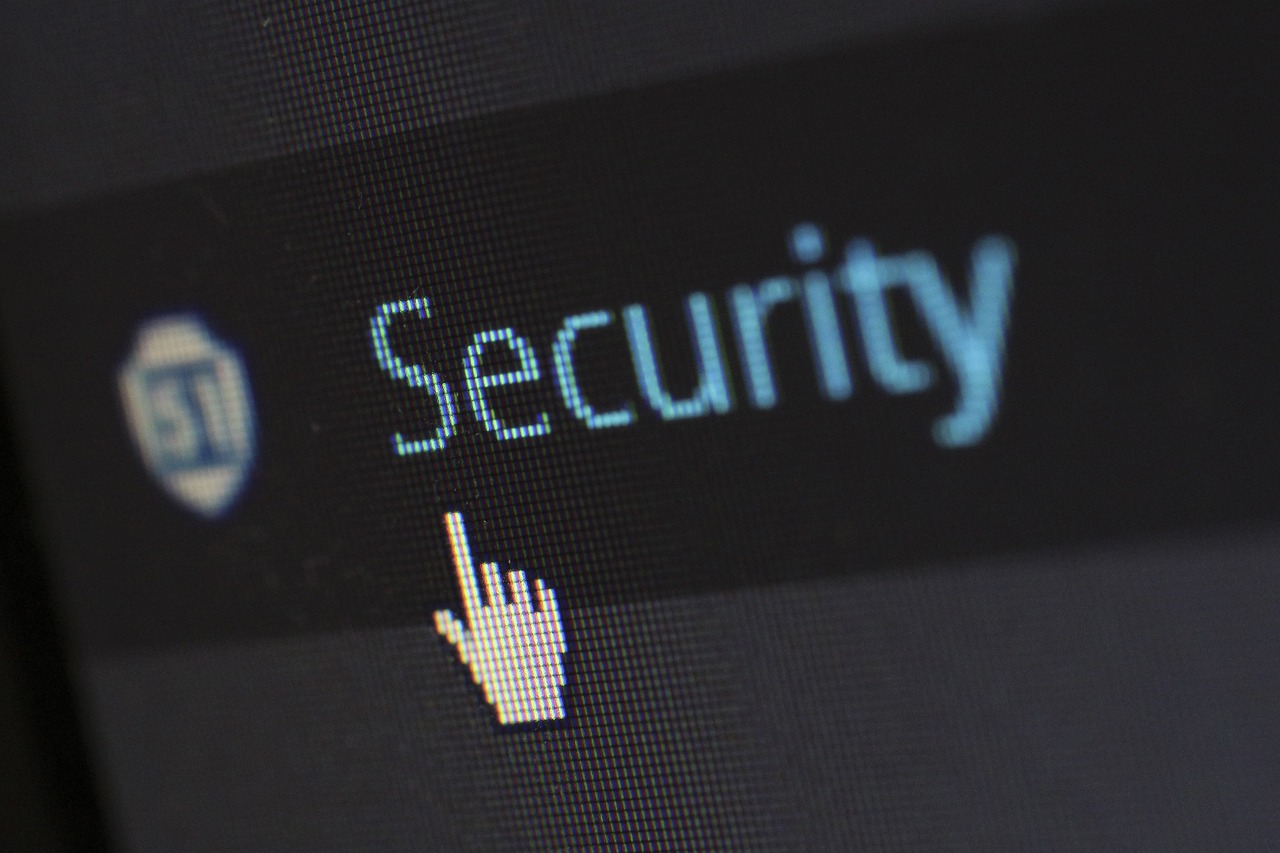
Educating Yourself on Security Trends
In the ever-evolving digital landscape, staying informed about security trends is more crucial than ever. Cyber threats are not static; they morph and adapt, making it essential for users to keep up with the latest developments. Just like how a gardener must regularly check for pests to protect their plants, you too must be vigilant in safeguarding your online presence. By educating yourself, you empower not just yourself but also those around you to recognize and combat potential threats.
One effective way to stay updated is by following reputable cybersecurity blogs and websites. These resources often provide insights into recent hacks, emerging threats, and the best practices to mitigate risks. For instance, sites like Krebs on Security and SecurityWeek regularly publish articles that can enhance your understanding of the current security climate.
Moreover, consider subscribing to newsletters from cybersecurity firms. These newsletters can deliver the latest news straight to your inbox, making it convenient to stay informed. You might also want to follow thought leaders in the cybersecurity space on social media platforms. Engaging with their content can provide you with valuable insights and keep you in the loop about security trends.
Another effective strategy is to participate in online forums and communities dedicated to cybersecurity. Websites like Reddit's Cybersecurity subreddit or Stack Exchange allow users to share experiences, ask questions, and learn from one another. This collaborative approach helps you grasp complex topics and stay alert to new threats.
In addition, consider taking online courses or attending webinars focused on cybersecurity. Platforms like Coursera and Udemy offer courses designed to enhance your knowledge and skills in this area. Not only do these educational opportunities provide valuable information, but they also allow you to earn certifications that can bolster your resume.
Lastly, remember that cybersecurity is not just an individual endeavor; it’s a community effort. Share what you learn with friends and family to create a more secure environment for everyone. When you educate others, you contribute to a culture of awareness and vigilance against cyber threats. After all, a well-informed society is a resilient society, capable of standing up to the challenges posed by hackers and cybercriminals.
- What are the best resources to learn about cybersecurity?
Some excellent resources include cybersecurity blogs, newsletters from cybersecurity firms, online courses, and community forums.
- How often should I update my knowledge on security trends?
It's advisable to keep yourself updated regularly, ideally weekly or monthly, to stay informed about the latest threats and best practices.
- Can I learn about cybersecurity for free?
Yes, many platforms offer free courses and resources. Websites like Coursera and YouTube have numerous free materials available.
Frequently Asked Questions
- What are the common risks associated with social media accounts?
Social media accounts face various risks, including unauthorized access, data breaches, phishing attacks, and identity theft. Being aware of these threats is the first step in protecting your personal information online.
- How can I create a strong password for my social media accounts?
A strong password should be at least 12 characters long and include a mix of uppercase and lowercase letters, numbers, and special symbols. Avoid using easily guessable information, like birthdays or common words.
- What is a password manager, and why should I use one?
A password manager securely stores and manages your passwords, allowing you to create complex, unique passwords for each account without the need to remember them all. This significantly enhances your account security.
- How do I choose the right password manager?
When selecting a password manager, look for features like strong encryption, cross-platform availability, ease of use, and additional security measures like two-factor authentication. Popular options include LastPass, Dashlane, and 1Password.
- What is two-factor authentication (2FA), and how does it work?
Two-factor authentication adds an extra layer of security by requiring not only your password but also a second form of verification, such as a code sent to your mobile device. This makes it much harder for hackers to gain access to your account.
- How often should I update my security settings?
It's essential to review and update your security settings regularly, ideally every few months. This includes checking privacy settings, reviewing connected apps, and updating passwords to ensure your accounts remain secure.
- What are some signs of phishing attempts?
Common signs of phishing include unexpected emails or messages asking for personal information, suspicious links, poor spelling and grammar, and a sense of urgency. Always verify the source before clicking on any links or providing information.
- How can I report phishing attempts?
If you encounter a phishing attempt, report it to the platform where it occurred (like Facebook or Twitter) and forward the email to the appropriate authorities. This helps protect others from falling victim to the same scam.
- Where can I find resources to educate myself about security trends?
There are many resources available online, including cybersecurity blogs, podcasts, and courses. Websites like the Cybersecurity & Infrastructure Security Agency (CISA) and various tech news outlets provide valuable information on the latest threats and best practices.



















